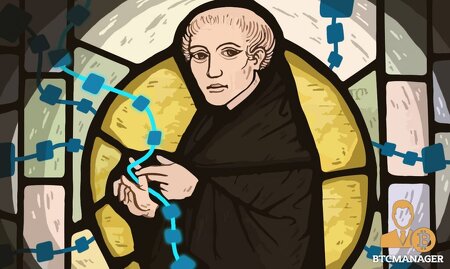Contents
Bitcoin’s value derives from both the security of the underlying technology, global adoption by the community of bitcoin users and the fact that its supply is capped at 21 million. Bitcoin is the best known and most valuable cryptocurrency, a form of digital money. Unlike dollar bills that you can hold in your wallet or stuff in your pocket, you can’t physically touch a bitcoin. Bitcoins exist in a purely digital environment maintained by a large network of computers worldwide. Bitcoin is legal in seven of the top ten world economies by GDP in 2022, including the United States, France, and Japan. The legal status of bitcoin varies substantially from country to country and is still undefined or changing in many of them.
Investors and speculators became interested in Bitcoin as it grew in popularity. Between 2009 and 2017, cryptocurrency exchanges emerged that facilitated bitcoin sales and purchases. Prices began to rise, and demand slowly grew until 2017, when its price broke $1,000. Many people believed Bitcoin prices would keep climbing and began buying them to hold. Traders began using cryptocurrency exchanges to make short-term trades, and the market took off. Transactions are placed into a queue to be validated by miners within the network.
The first regulated bitcoin fund was established in Jersey in July 2014 and approved by the Jersey Financial Services Commission. On 10 December 2017, the Chicago Board Options Exchange started trading bitcoin futures, followed by the Chicago Mercantile Exchange, which started trading bitcoin futures on 17 December 2017. Dish Network, a Fortune 500 subscription TV provider, has been described as the first large company to accept bitcoin, in 2014. A 2014 study of Google Trends data found correlations between bitcoin-related searches and ones related to computer programming and illegal activity, but not libertarianism or investment topics.
It can be a helpful tool for the diversification of investment portfolios other than the options of bonds and stocks. Even if Bitcoin is suitable for making purchases, the limited number of vendors accepting Bitcoin payments is a formidable setback. However, the world could witness the transformation of Bitcoin into a commonly accepted form of digital payment in the future.
Unlike fiat currency, Bitcoin is created, distributed, traded, and stored using a decentralized ledger system known as a blockchain. Platforms that buy and sell bitcoin may be unregulated, can be hacked, may stop operating, and some have failed. In addition, like the platforms themselves, digital wallets can be hacked. Bitcoin mining is the process through which new transactions on the bitcoin blockchain are verified. Bitcoin is the network of connected computers where the digital token lives.

She attaches the payment for coffee to Bob’s address, thereby “encumbering” that output with the requirement that Bob produces a signature in order to spend that amount. This chain of transactions, from Joe to Alice to Bob, is illustrated in A chain of transactions, where the output of one transaction is the input of the next transaction. Bitcoin is powered by blockchain, which is the technology that powers many cryptocurrencies. A blockchain is a decentralized ledger of all the transactions across a network. Groups of approved transactions together form a block and are joined to create a chain. Think of it as a long public record that functions almost like a long running receipt.
Today, at least, this domain is WhoisGuard Protected, meaning the identity of the person who registered it is not public information. Amanda Jackson has expertise in personal finance, investing, and social services. She is a library professional, transcriptionist, editor, and fact-checker.
Bitcoin BTC
This would require a huge amount of computing power and is next to impossible. With this method, blockchain is non-hackable and prevents data modification. For an overview of cryptocurrency, start with Money is no object.

Bitcoin Core includes a transaction verification engine and connects to the bitcoin network as a full node. Moreover, a cryptocurrency wallet, which can be used to transfer funds, is included by default. In March 2013 the blockchain temporarily split into two independent chains with different rules due to a bug in version 0.8 of the bitcoin software. The two blockchains operated simultaneously for six hours, each with its own version of the transaction history from the moment of the split.
Use by governments
Standards vary, but there seems to be a consensus forming around Bitcoin, capitalized, for the system, the software, and the network it runs on, and bitcoin, lowercase, for the currency itself. The 2014 documentary The Rise and Rise of Bitcoin portrays the diversity of motives behind the use of bitcoin by interviewing people who use it. The 2016 documentary Banking on Bitcoin is an introduction to the beginnings of bitcoin and the ideas behind cryptocurrency today. Bitcoin Core includes a scripting language inspired by Forth that can define transactions and specify parameters. ScriptPubKey is used to “lock” transactions based on a set of future conditions. ScriptSig is used to meet these conditions or “unlock” a transaction.
- Since Bitcoin and other cryptocurrencies are volatile, even if you manage to successfully mine a respectable amount of cryptocurrency, you’ll still be underwater if the value suddenly plummets.
- Bitcoin is a decentralized digital currency that operates without the need of financial system or government authorities.
- Data linked between blocks is what led to the ledger being called a blockchain.
- The inventor of bitcoin, Satoshi Nakamoto, also has a considerable amount of bitcoin left untouched after mining it years ago.
They are working to generate a number that matches the block hash. The programs randomly generate a hash and try to match the block hash, using the nonce as the variable number, increasing it every time a guess is made. The number of hashes a miner can produce per second is its hash rate. Data linked between blocks is what led to the ledger being called a blockchain. One bitcoin is divisible to eight decimal places , and this smallest unit is referred to as a satoshi. If necessary, and if the participating miners accept the change, Bitcoin could eventually be made divisible to even more decimal places.
Developed in 2015, Ethereum is a blockchain platform with its own cryptocurrency, called Ether or Ethereum. Each block can only contain a certain number of transactions, and that number is determined largely by the space available in each block, or the ‘block size,’ which is 1MB. The limited space gives rise to the fee market, where miners, who collect fees, choose to include in the next block only those transactions which have included a high enough fee. Thus higher fees act as incentive for miners to prioritize your transactions. The corresponding unique private key which authorizes the bitcoin previously sent to the above public key to be sent elsewhere.
What is bitcoin and how does it work?
Bitcoin code is written to make solving its transaction-related algorithms, or puzzles, more challenging over time. This means that solving these puzzles requires more computing resources. Access to powerful computers and large amounts of electricity is now a must. In the malware world, one of the more prevalent current threats is mining botnet infections, where user systems mine for bitcoin without the owners’ knowledge and the funds are channeled to the botnet owner. The validation process, known as mining, is completed by cryptocurrency miners who own vast computing resources.

Mining is conducted by software applications that run on computers or machines designed specifically for mining called Application Specific Integrated Circuits. It has since become the most well-known cryptocurrency in the world. Its popularity has inspired the development of many other cryptocurrencies. These competitors either attempt to replace it as a payment system or are used as utility or security tokens in other blockchains and emerging financial technologies. Mining ensures that only legitimate transactions are verified in the blockchain of any given cryptocurrency. Mining is the process of providing a stable settlement mechanism to the network of a cryptocurrency.
Should You Buy Bitcoin?
The first miner to solve the next block broadcasts it to the network and if proven correct is added to the blockchain. That miner is then rewarded with an amount of newly created bitcoin. A transaction is a transfer of value between Bitcoin https://coinbreakingnews.info/ wallets that gets included in the block chain. Bitcoin wallets keep a secret piece of data called a private key or seed, which is used to sign transactions, providing a mathematical proof that they have come from the owner of the wallet.
You can minimize the likelihood of being personally scammed or hacked by choosing a bitcoin wallet—where you store your cryptocurrency keys—or combination of wallets that balances convenience and security. Most bitcoin miners work together in mining pools, sharing both computing power and bitcoin rewards received. And other miners choose to mine other cryptocurrencies that are less competitive and require less computing resources. The bitcoin blockchain is a digital ledger that tracks the creation and movement of every bitcoin.
Computations of this magnitude are extremely expensive and utilize specialized hardware. Simplified chain of ownership as illustrated in the bitcoin whitepaper. In practice, a transaction can have more than one input and more than one output.
The currency is digital only, meaning it cannot be removed from its digital network and therefore does not exist in a physical form like paper money. You cannot place a physical bitcoin in your wallet, even if you buy it at a bitcoin ATM . Bitcoin, which is the first and largest cryptocurrency, and its underlying blockchain technology have a range of benefits.
Although the complete blockchain is not needed all at once since it is possible to run in pruning mode. A command line-based daemon with a JSON-RPC interface, bitcoind, is bundled with Bitcoin Core. It also provides access to testnet, a global testing environment that imitates the bitcoin main network using an alternative blockchain where valueless “test bitcoins” are used. Regtest or Regression Test Mode creates a private blockchain which is used as a local testing environment.

Son Yorumlar